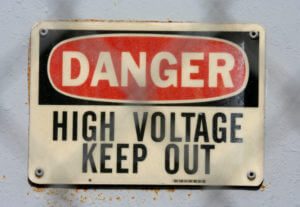 Recently, two men, who were electrical workers on a construction site in Lubbock, Texas, were accidentally exposed to live electrical wires while drilling into the second floor of a parking garage. One of these unfortunate souls died less than a day after the accident due to the severity of his injuries while being treated in a Lubbock Hospital. The coworker survived, but with severe trauma due to smoke inhalation and burns over 30 percent of his body.
Recently, two men, who were electrical workers on a construction site in Lubbock, Texas, were accidentally exposed to live electrical wires while drilling into the second floor of a parking garage. One of these unfortunate souls died less than a day after the accident due to the severity of his injuries while being treated in a Lubbock Hospital. The coworker survived, but with severe trauma due to smoke inhalation and burns over 30 percent of his body.
What Do Burns Do to You?
Severe burns like the ones described above, even if not fatal, have the potential to cause life-long debilitating injuries. Most such cases result in damage to one’s nerves and muscle tissue. Fluids can collect in tissue, which ultimately may lead to amputation of the affected limb. Limb amputation due to contact with live electricity can result in as many as three out of four cases.
Even where there is no obvious traumatic injury, there may be internal damage to the tissues because of the electric current passing through them. It is recommended that a doctor evaluate a victim’s muscle strength, joint movement, endurance, grip strength, and ability to perceive heat, as well as old or sharp objects upon touch. Another long-term effect happens to the legs: either increased pain or less sensation overall. Some victims describe the feeling in the legs as similar to multiple bee stings.
The effects from severe electrical burns may last well beyond the traumatic event, or even throughout one’s remaining life. Most people will suffer a normal post-traumatic response, but for some people who suffer “post-electric shock syndrome,” there are a number of cognitive and psychological symptoms that persist and get worse if left untreated. Chronic pain is also an ongoing issue for victims of severe burns. The problem with managing such pain is the same as with any other chronic pain—doctors must balance the need to control the symptoms with the addictive nature of the pain medication. It is often recommended that a combination of treatments be implemented, from pain management with medication to psychiatric testing and treatment.
How Do Electrical Injuries Happen?
Electrical injuries that occur at the workplace often happen because of a failure to vigorously follow safety protocols and OSHA regulations. For example, failure to turn off all sources of power to an area where electrical wires or cables may be accidentally cut into (or drilled into, like the accident in this case), or failure to have proper insulation from direct contact, often because of either cost-cutting measures or expediency, account for the vast majority of workplace trauma.
As for non-work related injuries, exposure to a live wire can happen anywhere, from a downed power line to a frayed cord for a lamp or a toaster. The best way to avoid such an injury is to treat any electrical wire as being “hot” in the moment and either avoid contact or have proper insulating equipment to protect against direct contact with the current. If a power line is down, do not get near it; call the power company immediately or 911 if a real emergency exists. In the home, do not use electrical appliances that have frayed cords as exposed wires can cause an electrical fire or deliver a shock to anyone who comes in contact.
What Should Be Done If Someone Is Burned?
If you witness an electrical accident and you wish to render assistance to the victim, it is extremely important that before you touch the person, you first turn off the power source, because the victim may still be part of a live circuit and you may find yourself electrocuted as well. If you cannot immediately cut off the power, then you may use insulated gloves or a non-grounded object (such as a piece of wood like a two-by-four). Once you have removed the victim from the electrical source, render basic first aid as appropriate. Check for consciousness; if conscious, tell the victim to remain still and not to move. Check for major bleeding and if present, place a cloth or gauze bandage (not a blanket or a towel, as fibers can come loose and adhere to the burn) over the wound and apply pressure. Keep the victim warm. If the victim is unconscious, make sure he or she is breathing. If CPR is needed, it should be done by someone trained to do it. For it to be effective, the CPR should be done within four minutes of the shock.
Even Low Voltage Can Be Dangerous
Not every exposure to electricity results in a traumatic injury. In fact, the vast majority of people exposed to low levels of electricity suffer no ill effects. They dust themselves off and go about their business. No trip to the hospital is usually necessary in those circumstances. However, anyone who was exposed to low voltage should go to the emergency room if they are showing symptoms of a serious injury, such as a racing heart. Failure to get immediate treatment may result in a worsening of the condition and long-term complications. If you, or someone you know, have suffered an electrical injury, it is advisable to seek medical attention immediately, whether or not there is immediately obvious trauma.
Accidents and injuries happen at the workplace, in the home, and out in the world. If you have been injured in any accident, you may be eligible to receive compensation to cover your medical expenses, lost wages, pain and suffering, and so on. The lawyers at Sexner Injury Lawyers LLC are experienced in personal injury and work-related injury matters, and will work tirelessly to obtain the justice you deserve. Call us at (312) 243-9922 to speak to one of our Chicago personal injury attorneys today at no cost or obligation and with complete confidentiality. Call today.


